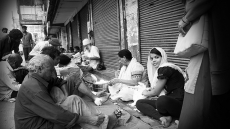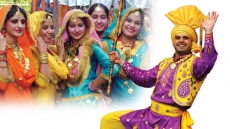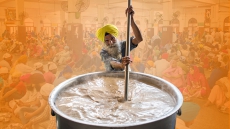The Sikh Gurus encouraged sangat to encourage unity, growth, bonding, and heightening spiritual awareness.
In present-day and historically, humans have naturally been connected to one another and gathered together as a tribe, village, group, community, and assembly. Sangat, particularly in Sikhism, is defined as a company or fellowship of women, men, and children that gather in holy assembly in the presence of Guru Granth Sahib Ji. They may meet in a Gurdwara, at a home, or elsewhere in the community. The Sikh Gurus encouraged Sangat to encourage unity, growth, bonding, and heightening spiritual awareness.”Dharmic faith, patience, peace, and poise are obtained by vibrating upon the Lord in the Saadh Sangat,” (Guru Granth Sahib Ji Ang 104).
The spiritual environment influences the personality and character of the devotees. “The rust of poison and corruption from countless incarnations sticks to us; joining the Sadh Sangat, the Company of the Holy, it is cleaned away. It is just like gold, which is heated in the fire, to remove the impurities from it” (Guru Granth Sahib ji Ang 666). Devotees may sit in Sangat to meditate and listen to Katha (sermons) or kirtan (hymns), which aids them to have a positive mindset, internal bliss, and harmony.
As one steps back from their attachments and self-existence, they will no longer see a partition, but rather a cohesive flow of unity of souls merging. Singing together in succession the expansion of the sound rises and transforms into a harmonious spiritual form. Sangat allows one not only to share their joy, but it also helps to release one’s sorrows, both spiritually and physically. Physically, one can aid in the preparation of langar (free meal) to serve the community. Further, Sangat can come in the form of outreach and collaboration to do Seva (selfless service). When a person is able to bond and communicate with others, it reduces stress and nourishes inner peace. Moreover, one’s negativity and sins are dispelled allowing them to become pure and aligned with God.
Guru Granth Sahib Ji states, “In the Saadh Sangat, the Company of the Holy, I meditate on the Lord, Har, Har; my lifestyle is pure and true.” Ang 104. It is up to all of us to connect with one another at a deeper level. Through this connection, friction amongst communities will reduce and connections as opposed to differences will be celebrated.
The future is in our hands to end wars and have common goals of peace. Sangat is the purity of all souls merging like raindrops into the ocean, with the multiple ripples arising and adapting to the change; but forever unifying into one. This Vaisakhi I encourage you all to dive into that ocean with love and peace in your heart. Waheguru.





